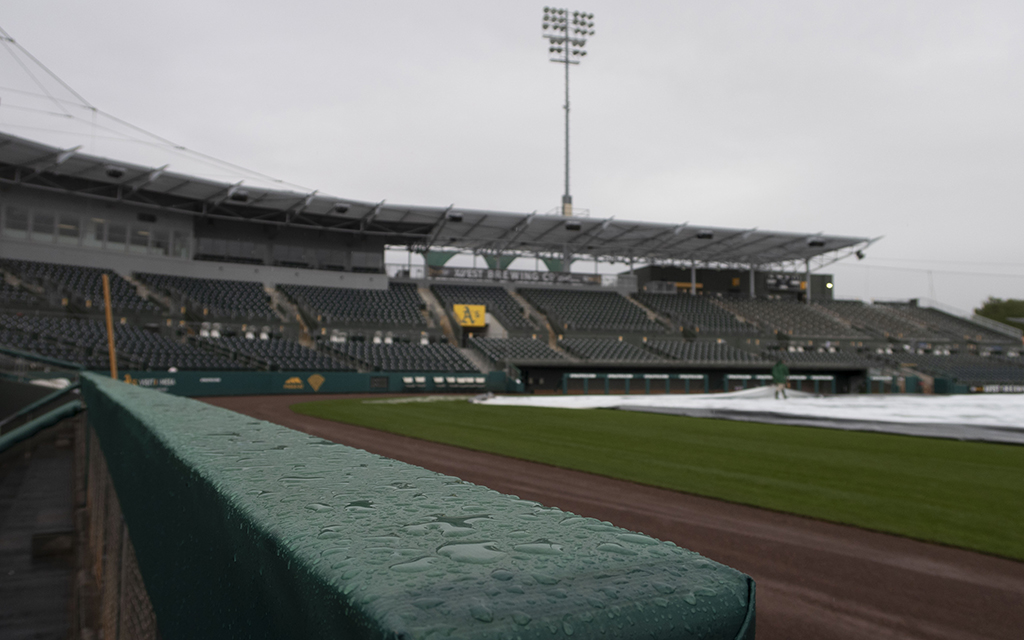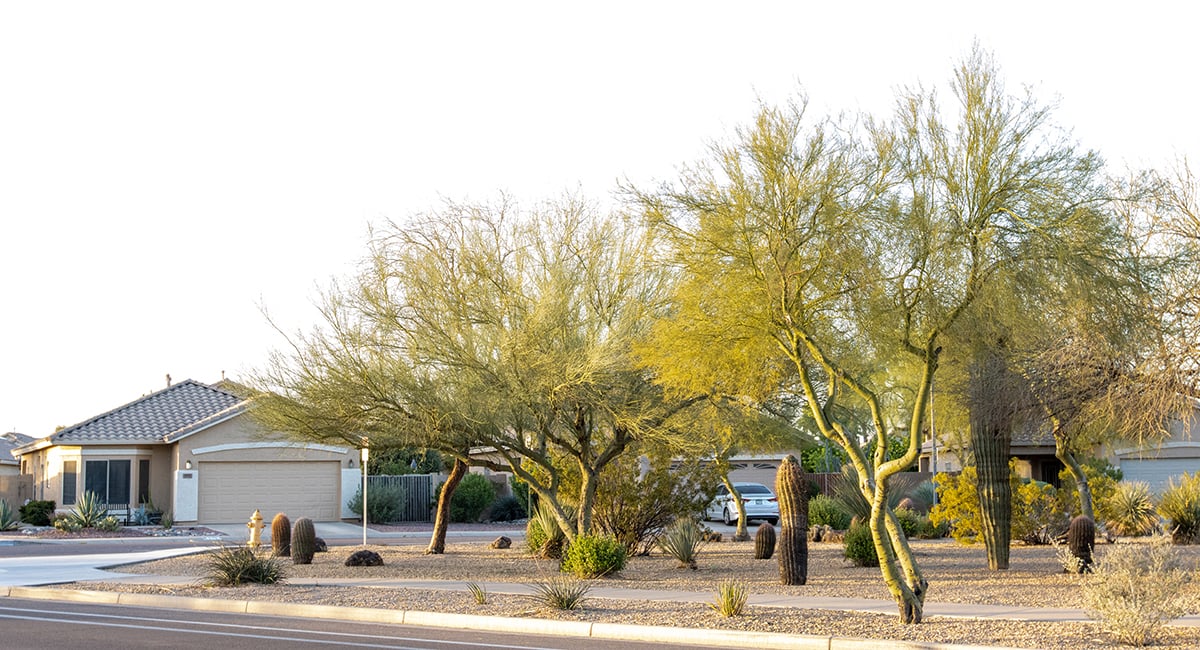PHOENIX – For a sport obsessed with stats, metrics from these factors might be baseball’s most unappreciated:
Humidity. Temperature. Altitude.
Although most fans think of rain delays when reflecting on weather’s impact on baseball, things including air density and humidity percentage can affect the way the ball travels and how players perform on a daily basis.
“You can’t really completely prepare for it but you’ve got to have solutions and always be able to be flexible and make adjustments,” said Oakland Athletics manager Mark Kotsay.
After a rule change in scheduling for the 2023 season, each MLB team will play the remaining 29 teams for the first time since the league expanded to 30 in 1998. Although this doesn’t mean each MLB team will visit every other stadium over the course of the season, it does mean that each team will have the chance to play in other ballparks more consistently.
According to research published by the Bulletin of the American Meteorological Society that focused on how climate change affects the game of baseball, a one degree change in celsius (1.8 degrees fahrenheit) of the daily high temperature increases the number of home runs in that game by 1.96% in stadiums without a dome. That percentage jumps to 2.4% if the game is played during the day and 1.7% if the game is played at night.

(Graphic by Reece Andrews/Cronkite News)
Field dimensions aren’t the only thing that vary in ballparks. So do aspects such as average temperature and humidity, which play a factor in air density and how the ball travels during pitching and off the bat.
For pitchers and batters alike, temperature and humidity are taken into consideration on a daily basis. For pitchers in particular, humidity is one of the more noticeable changes felt while on the mound.
“There’s days where when you’re in a more humid climate, you’re aware of that,” A’s pitcher Paul Blackburn said. “You’re breaking stuff is going to break a little better and you’re going to get a little more break out of it so you might use those pitches a little more.”
Although hitters have a lot less control of the ball after contact is made, their approach at the plate may differ depending on the weather conditions present. For Oakland second baseman Tony Kemp, he’s always aware of his environment.
“It’s important to take a look at them,” Kemp said. “I mean if it’s very windy and it’s swirling and it’s blowing in, you really want to focus on working on top of the baseball so you’re not really hitting fly balls. You kind of want to work that ground ball, line drive approach.”
Players throughout the league are aware that weather affects strategy. Of those elements, temperature is always playing a role in how the ball travels.
As temperature heats up, hitting also heats up and more balls are sent over the fence. For players, that means better statistics and the ability to help your team win. For fans, there’s a higher chance of walking away with a souvenir.
Zack Hample, a baseball superfan and YouTuber with 600,000-plus subscribers, has collected over 12,000 baseballs from MLB stadiums, including Alex Rodriguez’s 3,000th career hit. Hample has attended games in all sorts of conditions and in his time catching baseballs for a career, he has noticed the differences warm and cold weather has on the ball.
“When the weather is hotter, the balls carry farther, they’re boosted by that hot air rising,” Hample said. “I’m not a scientist but I understand this to be true from going to almost 2,000 Major League Baseball games.”
Hample’s plethora of experiences catching baseballs has given him more insight than just recognizing that warmer days help the ball travel farther. Hample said that from his experience, cold weather also affects player’s performance, which results in altered reaction times and swing patterns.
Research backs Hample’s claim. A recent study in the International Journal of Environmental Research and Public Health showed cold impacted reaction time, endurance and balance.
“From a perspective of catching baseballs, I want warm weather when I’m chasing home runs but if I’m chasing foul balls, let it be cold, cold, cold,” he said. “It’s harder for everybody including the batters, I think.”
Hample’s experience and reputation has made him a recognizable face throughout all MLB stadiums and a reliable source for fans who are looking to snag an item to remember the game by.
Although professional players and superfans like Hample experience different weather conditions in different stadiums throughout the country, players in Arizona have the luxury of preparing for more predictable weather.
The state is a prime location for year-round baseball due to the warmer desert climate, but the consistent high temperatures mean that preparation may vary compared to other regions of the United States.
Phoenix College coach Scott Schneider feels Arizona’s warm and consistent weather is beneficial for practicing and playing games without weather delays, but the warm weather also helps his players stay ready no matter the situation.
“For me, I worry about guys getting injured, and when they’re cold, they tend to pull muscles and do different things,” Schneider said. “Their body’s just not ready for it where with the warm weather, guys get to stay a little bit healthier. It’s a little easier to get loose and perform to their best.”
Though the warm weather helps players stay healthier in the long run, it can also be harmful without proper preparation. Just like any activity that requires extensive physical activity, staying hydrated is a necessity in order to play at peak performance, and that’s no different for baseball players throughout the state.
“One thing I definitely do is drink a lot of water a night before, Liquid IV, stuff like that,” Phoenix College pitcher Robby Butenschoen said. “You don’t want to get on the field and start seeing cinnamon track monsters so you got to stay hydrated.”
As summer quickly approaches, players will continue to make the proper preparations for the sport they love, whether that’s the night before or in the batter’s box.
Weather can never spoil a love for the game.



